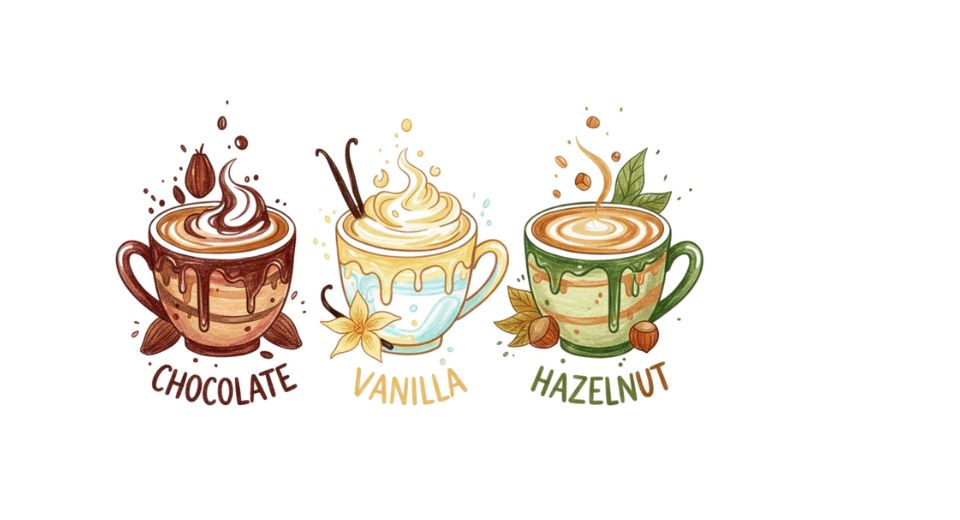
Oct 31, 2025

The global flavored coffee market, as illustrated by Metastat Insight, is a reflection of a heightened appetite for personalized taste experiences married with tradition and innovation. From harried coffeehouses to home brews in pursuit of new sensory adventures, flavored coffee has evolved from simply a beverage but a lifestyle. The market is a transformation of the nature of flavor, aroma, and texture, in turning a daily routine into a luxury, bespoke experience. With preferences leaning towards innovation and high sensory quality, the segment remains under consideration with its mix of novelty and familiarity.
Market context
Across the beverage market, the quest for differentiation and sensory appeal has intensified. Increasingly, consumers are drawn to options of emotional relevance and authenticity but consistency and convenience. The coffee category, long controlled by straight roast styles, is now working within a space where flavor profiles define identity. Passion for artisanal production, sustainable sourcing, and taste experimentation has given fertile ground for innovation. The flavored coffee market in glass has positioned itself as an agent of this shift bridging beauty and functional preservation. Packing not only maintains freshness and aroma but also adds to visual beauty, the contemporary aspirant for transparency, quality, and design-led consumption.
How it works / why it's valuable
Natural and infused flavorings are used by flavored coffee that add depth to the natural personality of the bean without overpowering it. Each blend attempts to balance between roasting techniques and added flavor notes, with each yielding a product suitable for various palates ranging from the delicate vanilla undertones to bold caramel and hazelnut taste.
It is the combination of taste innovation and authenticity packaging that distinguishes the glass flavored coffee market. Glass packaging has better preservation of freshness compared to others, as it prevents external contamination and flavor transfer. Additionally, their recyclable and reusable nature adds an environmental aspect that appeals to today's ethical choice. This balance of sensory appeal and green packaging puts the market as a high-end choice in retail and hospitality channels.
Growth story / technological evolution
The origins of flavored coffee go back to innovation in specialty coffee shops and small roasteries, where passion for taste variation created early demand. Gradually, what was initially niche products escalated to mainstream distribution with new preservation methods and flavor infusions. Technological improvement on roasting precision, micro-flavoring, and sealing technology further improved product quality and assurance.
Glass used in flavored coffee capitalized on all this improvement. Usage of glass containers evolved from simple decoration to a utilitarian standard recognized for its retention of aroma strength and freshness life. As consumers became more aware, focus turned from presentation to growing positioning glass from package to the luxury experience element. Local or global trends Flavored coffee consumption has strong traction in markets with established café cultures and appetites for premium beverages.
High-urban and evolving lifestyle markets record high demand for gourmet and customized blends. Of these environments, the glass-flavored coffee market appeals to distributors that emphasize quality control as well as sustainability. Of emerging markets, demand for international taste patterns and larger retail space is creating new opportunities.
Growing awareness of artisanal and home-brewing tenets is creating room for localized flavor adaptation through cultural taste. This geographic spread illustrates how packaging sophistication and flavor innovation intersect to yield a heterogeneous international base.
Challenges and opportunities
The market has positive momentum, but it is confronted with typical premium beverage segment challenges. Flavor consistency manufacturing expense and glass packaging remain higher in cost than conventional options. Supply chain logistics, particularly transportation and handling, must be carefully controlled to maintain integrity. Competition from composite materials and alternative forms of packaging also introduces cost and sustainability factors to the debate. These threats, though, co-exist with gigantic opportunities.
Accelerating technology for flavor extraction, roasting automation, and green glass production continues to lower operational barriers. Collaboration among packaging innovators and coffee producers opens up windows for efficiency, little waste, and better presentation at the shelf. Moreover, integration of e-commerce platforms integrates the consumer directly, fostering loyalty through tailored experiences.
Why it matters now
The glass flavored coffee market has more than drink choice to contribute. It reflects deeper international trends toward sustainability, artisanal craftsmanship, and considerate consumption. As lifestyles increasingly become active, consumer demand for products offering both sensorial pleasure and eco-friendliness increases. Where technology, design, and science of flavor intersect, this market is a bellwether for more change in food and beverage. It shows how seemingly minor breakthroughs in taste and package can collectively redefine culture's tastes and expectations.
The global flavored coffee market by Metastat Insight captures this change, demonstrating how an unassuming cup of coffee continues to advance as a symbol of innovation, transparency, and mindful indulgence plotting the next generation of everyday indulgence.
Drop us an email at:
Call us on:
+1 214 613 5758
+91 73850 57479